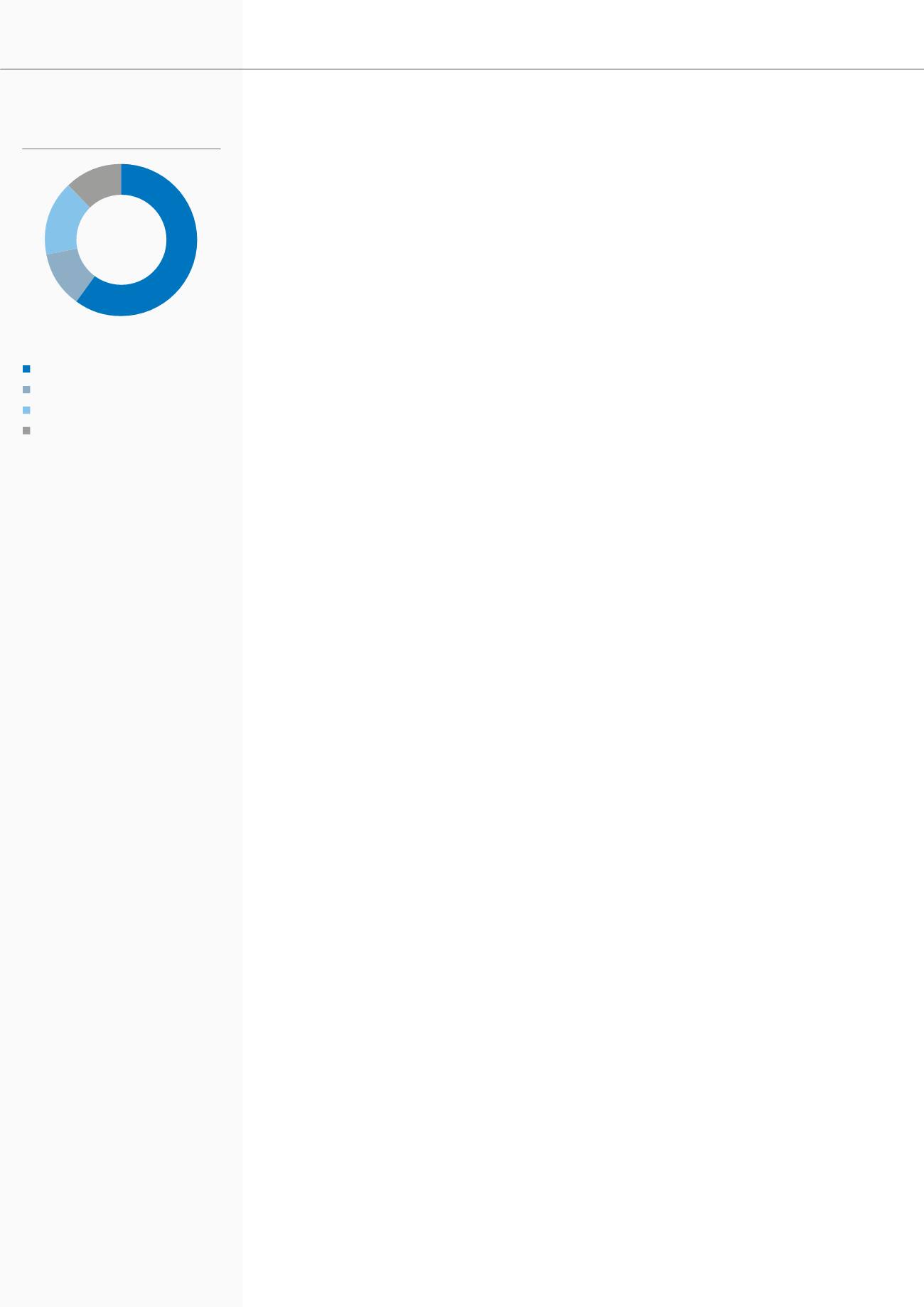

KONE 2015 | SUSTAINABILITY REPORT
SUPPLY CHAIN
4 4
Total 3,853 MEUR
Direct materials and supplies
Subcontracting
Other production costs*
Other indirect costs**
60%
(60%)
12%
(12%)
14%
(16%)
14%
(12%)
Breakdown of material
and service costs
* Mainly freight and packaging costs
as well as other variable costs such as
utilities, tools and operatives related
costs.
** Relate to for example administration
expenses, covering IT, marketing,
trainings, and insurances.
Our suppliers and their sub-tier suppliers are a
critical part of KONE’s supply chain. Without
them, we could not provide high-quality
products and services to our customers. Just
as internal efficiency is essential, so is working
effectively with the approximately 20,000
suppliers who provide KONE with raw materials,
components, modules, and logistics and
installation services – not to mention other
suppliers who provide us with indirect materials
and services.
We only produce selected components
in-house. Our production consists largely of
the assembly of sourced components. The
main raw materials used in our elevators,
escalators, and automatic building doors are
various types of steel and stainless steel as well
as aluminum and copper.
We purchase approximately 80% of our
raw materials, components, and systems
supply for new equipment production from
approximately 100 suppliers, the majority of
which are located in the same countries as
KONE factories or distribution centers (see Top
10 Supplier Locations).
Managing the relationships with our
suppliers
We work closely with our suppliers to develop
our business, and our aim is to build a long-
term relationship with them. We manage our
suppliers according to a tailored approach that
evaluates their importance and criticality to
KONE. This is done through the regular, critical
assessment of multiple factors such as the
business scope and spend with the supplier,
the innovation potential of the supplier, the
criticality of provided materials or services, the
supply chain situation, and the investment or
integration level of KONE with the supplier.
Based on supplier status, our management
and measurement techniques include audits,
assessment and mitigation of supplier-
related risk, the employment of standardized
contractual agreements that include the KONE
Supplier Code of Conduct, the assessment
of supplier performance, and supplier
certification.
Supplier Audits
All of the main suppliers of direct materials to
KONE distribution centers or factories undergo
regular audits. All of KONE’s strategic suppliers
were audited in 2015. We review our audit
plan every year to prioritize and schedule audits
according to KONE’s business needs. The audits
are scheduled to check on changes in products
or production processes, validate follow-through
on improvement initiatives, assess quality and
environmental management systems, especially
when suppliers are not ISO certified, or pre-audit
the suitability of potential suppliers.
Assessing supplier risks
KONE’s sourcing risk monitoring system is
based on a thorough assessment of suppliers,
including analyses of their financial and
business viability, and their dependence on
business from KONE. We also work closely
with our strategic suppliers to find competitive
raw material price levels.
Supplier Code of Conduct
KONE requests all its suppliers to commit to
KONE’s Supplier Code of Conduct. The code sets
forth KONE’s global values. Suppliers are expected
to adhere to the code in their dealings with
KONE, their employees, and suppliers, as well as
third parties. KONE may terminate its contracts
with suppliers for failure to adhere to the code.
KONE’s Supplier Code of Conduct was
updated during 2015 and the revised
document is the basis of new contract
negotiations and contract updates with
existing suppliers.
The Supplier Code of Conduct includes the
following key element:
Legal compliance
– Compliance with local
laws and regulations.
Business conduct
– Compliance with
ethical conduct respecting human rights;
zero tolerance for bribery and corruption;
avoidance and active disclosure of conflicts of
interest; fair conduct of business with regard
to competition laws and regulations.
Labor and human rights
– Fair and equal
treatment of employees; non-usage of child
or forced labor; ensuring a harassment-free
environment for employees; compliance
with any applicable wage-related laws and
regulations; respect of employee’s rights to
TOP 10 SUPPLIER LOCATIONS
1)
China
Italy
Finland
United States
Austria
India
Czech Republic
Estonia
Germany
Mexico
1) Suppliers that provide products for
new equipment to KONE distribution
centers and factories
LONg-TERM RELATIONSHIPS WITH SUPPLIERS


















